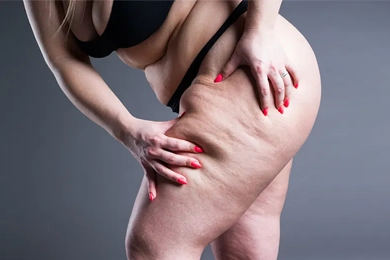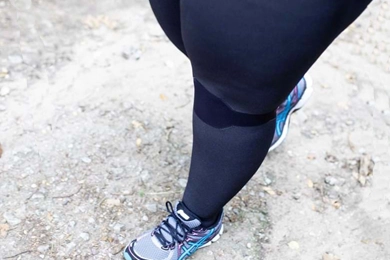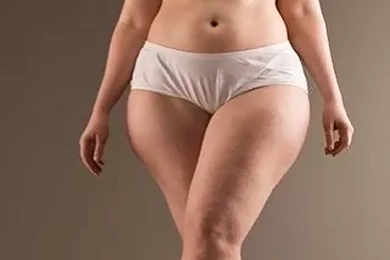
A chronic illness called lipedema, which mainly affects women, is characterized by an abnormal build-up of fat, generally in the arms but also in the legs. This illness is frequently misdiagnosed or misunderstood, and it differs from regular weight gain or obesity. Let's examine this state in greater detail:
In summary;
Although lipedema is a difficult illness to manage, advances in treatment, especially VASER liposuction, give hope for successful outcomes. For an accurate diagnosis and suitable treatment planning, patients should see medical professionals experienced in treating lipedema.
With an emphasis on VASER liposuction, this all-encompassing approach to controlling lipedema highlights the significance of expert care when handling complicated medical issues.
VASER liposuction is a minimally invasive surgical method that targets lipedema-affected areas and breaks up and removes fatty tissue using ultrasonic technology.
In comparison to traditional liposuction, VASER liposuction is less invasive, more focused, and causes less stress to surrounding tissues by liquefying fat cells using ultrasonic waves.
Absolutely, VASER liposuction is seen to be quite successful in treating lipedema, particularly in terms of lowering the amount of lipedemic fat and easing symptoms related to it.
People with a diagnosis of lipedema, stable weight, excellent general health, and reasonable expectations for the results are the best candidates.
The legs, thighs, buttocks, and even the arms are treated frequently because they are the common lipedema sites.
The operation normally involves anesthetic, so the patient experiences very little pain. Painkillers that are prescribed can help with post-operative discomfort.
The time it takes for early healing varies, but it usually takes a few days to a week. It may take several months to fully recuperate and observe the desired outcome.
The dangers associated with surgery are infection, hemorrhage, and anesthesia-related side effects. Particular dangers associated with VASER liposuction include transient numbness and uneven contours.
Long-lasting effects are possible, particularly if patients continue to lead healthy lifestyles and keep a stable weight.
Depending on the severity of their lipedema, some patients may need more than one treatment to get the desired outcomes.
The amount of fat that can be safely eliminated in one session varies depending on the specific instance. The right amount will be decided by your surgeon.
The answer varies depending on the insurance company and the policy. Although liposuction is typically not covered because it is a cosmetic operation, there may be some exceptions if it is medically necessary.
VASER liposuction permanently removes fat cells, but treatment does not treat the underlying cause of lipedema, which is a chronic problem. Sustained supervision could be required.
How is VASER liposuction performed?
The process entails making tiny incisions, putting in a probe to liquefy fat cells using ultrasonic energy, and then sucking out the fat.
What is the VASER liposuction success rate for lipedema?
In general, success rates are high, and many patients report notable improvements in their quality of life and symptoms.
How do I prepare for VASER liposuction?
In order to be prepared, you should get a medical evaluation, talk with your surgeon about your expectations, and adhere to any pre-operative advice, such as not taking certain drugs.
What kind of anesthesia is used?
Depending on the extent of the surgery, the procedure may be performed under general anesthesia or local anesthetic along with sedation.
What is the post-operative care for VASER liposuction?
Using compression garments, avoiding physically demanding activities, going to follow-up appointments, and according to your surgeon's care recommendations are all part of post-operative care.
Can VASER liposuction treat other conditions besides lipedema?
Absolutely, VASER liposuction is also utilized to treat different conditions where removing fat is advantageous and to sculpt the body.
How soon after the procedure will I see results?
Following surgery, initial benefits are noticeable right away, but it may take many months for the full effects to show when the swelling goes down.
Will there be scarring from VASER liposuction?
Because the incisions are so small, there is very little scarring, and the scars usually disappear over time.
Can VASER liposuction improve mobility?
Many patients report more mobility and reduced lipedema-related pain and discomfort, which improves their general quality of life.
What are the benefits of VASER liposuction over other liposuction techniques?
Benefits include improved preservation of surrounding tissues, faster recovery, reduced bruising and swelling, and more accurate fat removal.
Is there an age limit for undergoing VASER liposuction for lipedema?
Patients must be in good general health; there is no upper age limit. The appropriateness for elderly individuals varies based on personal health and medical background.
How long do I need to wear compression garments after the surgery?
As directed by your surgeon, compression garments are usually worn for a few weeks following surgery.
Are there any lifestyle changes I need to make post-surgery?
The key to maintaining the benefits of the operation is to maintain a nutritious diet, engage in regular exercise, and control your weight.
What happens if I gain weight after VASER liposuction?
Gaining weight may have an impact on the outcomes. Other parts of the body may acquire volume more quickly than the treated area.
Can VASER liposuction eliminate cellulite?
VASER liposuction is not a cellulite treatment specifically, however it can reduce the appearance of cellulite by eliminating fat.
How much does VASER liposuction for lipedema cost?
The extent of the treatment, the location, and the surgeon's level of experience all affect the cost. Costs should ideally be discussed at a consultation.
How do I choose a surgeon for VASER liposuction?
Find a board-certified plastic surgeon who has completed VASER liposuction and has experience treating lipedema. Examine their credentials, testimonials, and prior patients' before and after pictures.
 Lipedema Socks
Lipedema SocksUsing customized compression clothing, sometimes referred to as lipedema socks, is one of the supportive treatments for treating the symptoms of lipedema. ...
 Unveiling Lipedema: Treatment, and the Benefits of Vaserlipo
Unveiling Lipedema: Treatment, and the Benefits of VaserlipoLipedema is a common illness that often goes undetected or is misunderstood. It is a chronic condition characterized by aberrant fat cell buildup in the legs and, in some cases, the arms. ...
 Lipedema Diet
Lipedema DietLipedema is a persistent medical condition that predominantly impacts women and manifests as an abnormal accumulation of fat in particular body regions, including the legs and occasionally the limbs. ...